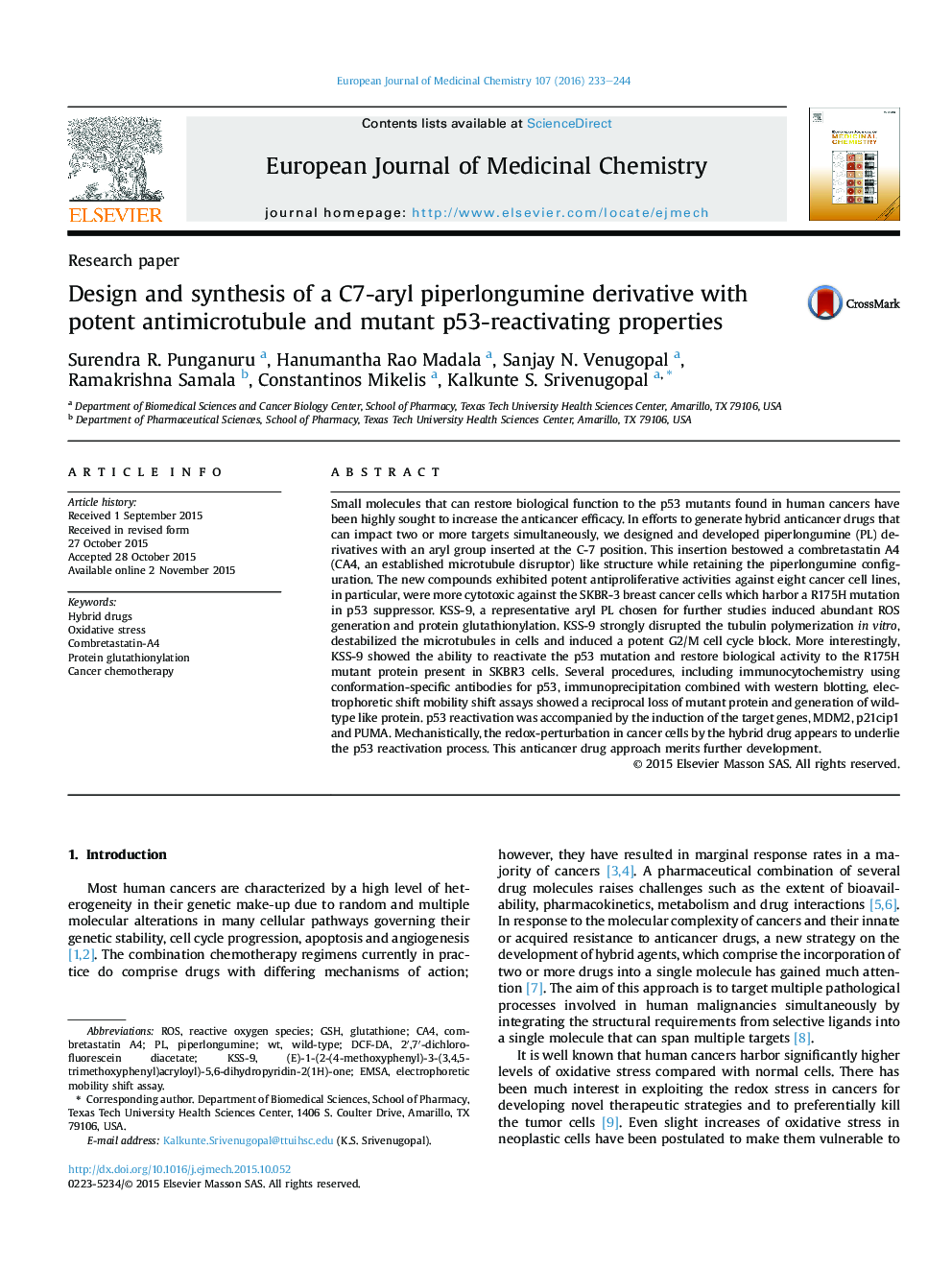| کد مقاله | کد نشریه | سال انتشار | مقاله انگلیسی | نسخه تمام متن |
|---|---|---|---|---|
| 1393926 | 1501109 | 2016 | 12 صفحه PDF | دانلود رایگان |

• A multivalent hybrid anticancer drug was synthesized to prevent drug resistance.
• Arylation of piperlongumine at C-7 position created a combretastain (CA4) mimic.
• The hybrid drug induced depolymerization of microtubules in vitro and in cells.
• The hybrid drug retained the properties of piperlongumine in inducing ROS.
• The hybrid drug reactivated the R175H mutant p53 protein present in SKBR3 cells.
Small molecules that can restore biological function to the p53 mutants found in human cancers have been highly sought to increase the anticancer efficacy. In efforts to generate hybrid anticancer drugs that can impact two or more targets simultaneously, we designed and developed piperlongumine (PL) derivatives with an aryl group inserted at the C-7 position. This insertion bestowed a combretastatin A4 (CA4, an established microtubule disruptor) like structure while retaining the piperlongumine configuration. The new compounds exhibited potent antiproliferative activities against eight cancer cell lines, in particular, were more cytotoxic against the SKBR-3 breast cancer cells which harbor a R175H mutation in p53 suppressor. KSS-9, a representative aryl PL chosen for further studies induced abundant ROS generation and protein glutathionylation. KSS-9 strongly disrupted the tubulin polymerization in vitro, destabilized the microtubules in cells and induced a potent G2/M cell cycle block. More interestingly, KSS-9 showed the ability to reactivate the p53 mutation and restore biological activity to the R175H mutant protein present in SKBR3 cells. Several procedures, including immunocytochemistry using conformation-specific antibodies for p53, immunoprecipitation combined with western blotting, electrophoretic shift mobility shift assays showed a reciprocal loss of mutant protein and generation of wild-type like protein. p53 reactivation was accompanied by the induction of the target genes, MDM2, p21cip1 and PUMA. Mechanistically, the redox-perturbation in cancer cells by the hybrid drug appears to underlie the p53 reactivation process. This anticancer drug approach merits further development.
Figure optionsDownload as PowerPoint slide
Journal: European Journal of Medicinal Chemistry - Volume 107, 1 January 2016, Pages 233–244